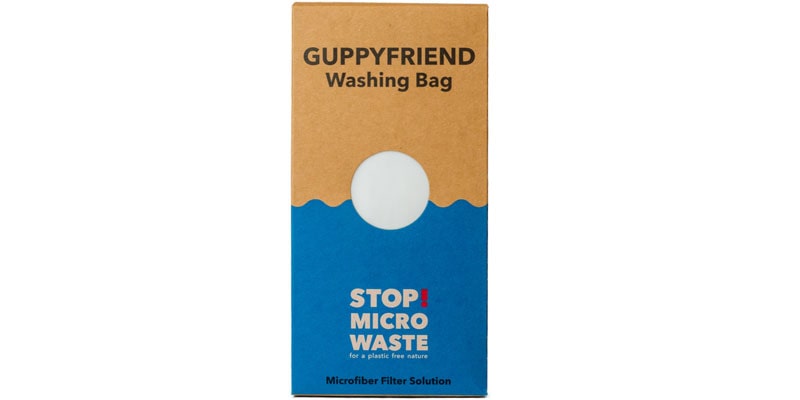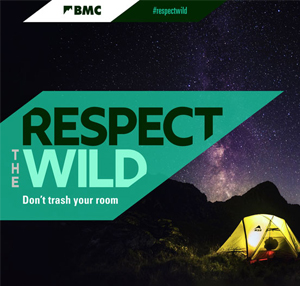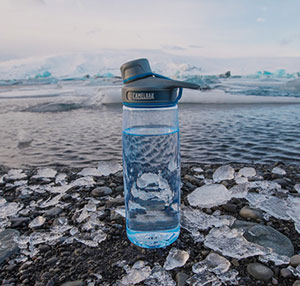The Problem With Plastic
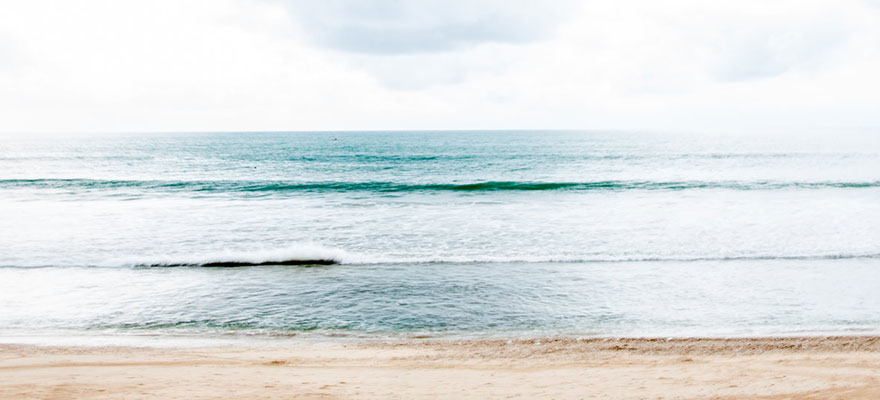
The environmental impact of plastic has become increasingly prominent in recent years. As we further understand the detrimental effect it is having on our nature and planet, it is crucial that the issue is addressed, and steps are taken to tackle the problem.
When we think of the plastic issue, images of carrier bags and bottles come to mind, but synthetic textiles are in fact an even bigger part of the problem and unfortunately often overlooked.
SYNTHETIC TEXTILES: MICROPLASTICS

"Microplastic", by Oregon State University, licensed under CC BY-SA 2.0
Synthetic materials are poisoning our oceans and food supply. When washed, synthetic textiles release microplastics.
Classified according to their size, these are plastics that measure less than or equal to 5mm. Neither washing machines nor wastewater treatment plants are able to filter the tiny plastic particles out. Especially in the aquatic environment, synthetic substances have a high potential for damage, since they can be spread worldwide by streams and rivers.
PREVENTION IS BETTER THAN CURE
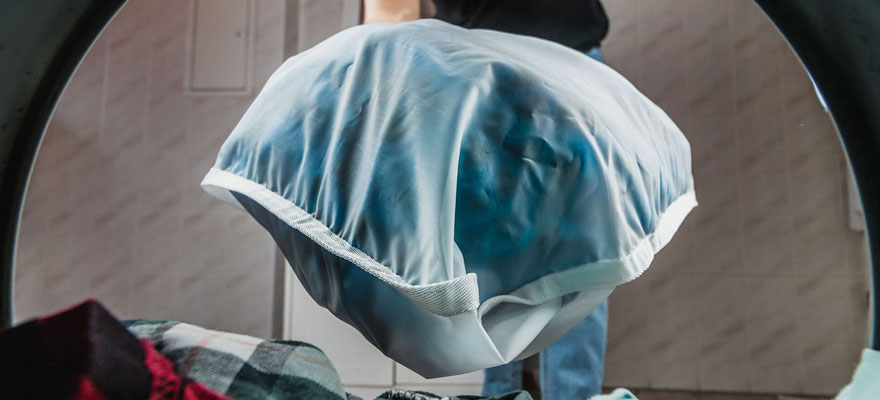
Picture Credit: Guppyfriend
There are a number of ways we can help to reduce the release of microplastics into waterways. One of the easiest steps to take is to use a Guppyfriend washing bag. It is a scientifically approved solution against microplastic pollution from washing.
WHAT IS A GUPPYFRIEND?
Made from polyamide 6.6 (bar the zip), the soft surface of the Guppyfriend bag results in fewer fibre losses. When washing synthetic clothes inside the Guppyfriend, the microfibers that usually break and drain away are instead captured inside the bag. It also helps garments last longer; compared to washing without the Guppyfriend, 86% fewer fibres shed from synthetic textiles.
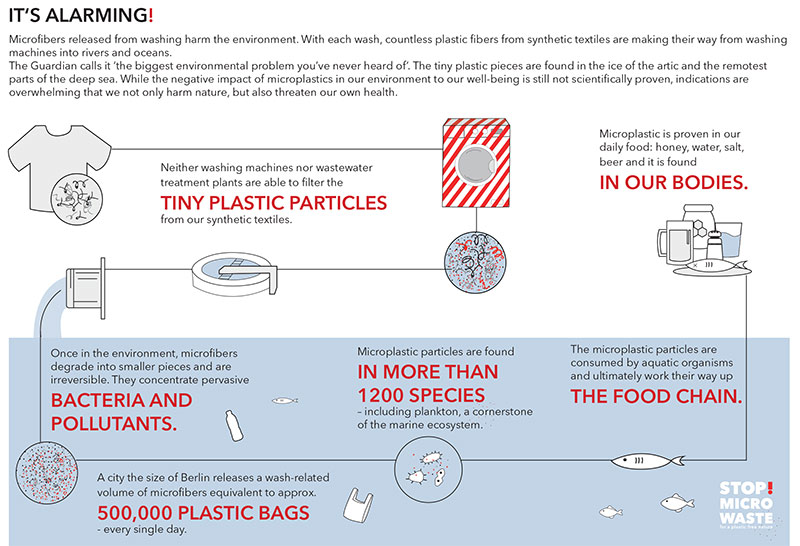
WHAT CAN YOU DO TO HELP?
To help solve the problem, here are ten easy steps you can take to change your washing habits for the better:
1. SKIP PLASTICS
Buy less but better: reflect on what you really need before you purchase. Check the label and avoid synthetic textiles such as polyester, acrylic and nylon.
2. WASH COLDER
It is commonly advised to wash bed linen at 60°C and colours at 40°C. However, in many cases washing at 30°C is sufficient. Water in combination with heat weakens the yarn, which results in much more plastic ending up in our oceans.
3. WASH LESS
Air out your clothes and wash out stains by hand to avoid unnecessary laundering.
4. REDUCE SPIN SPEED
A lot of friction happens during the spin cycle. As synthetic textiles dry fast, skip the spin cycle or at least reduce the rotation speed to help protect your clothes and the environment.
5. DON’T WASH SOLID ITEMS WITH YOUR LAUNDRY
Fibres break due to the mechanical forces in the washing machine; anything solid washed with your clothes leads to significantly more fibres breaking. Avoid adding items such as shoes and shin guards.
6. SOFT TO SOFT
Separate textiles with a hard surface from those with a soft surface. For example, by washing your jeans separately to your fleece items, you can help reduce your contribution to wash-related microplastic pollution.
7. DON’T TUMBLE DRY
The heat and the mechanical forces inside a tumble dryer are also a culprit of microplastic pollution. As synthetic clothes are already quick drying, choose to air dry your clothes instead. If you have to use a dryer, aim to filter the condensed water.
8. BE QUICK
The longer the wash, the more fibres will break. Most modern washing machines will have a short washing programme you can utilise.
9. GREENER CLEANER
Washing powder often contains mineral abrasives. These abrasives tend to increase friction, and increased friction leads to more fibres breaking. Bleach and ph.-value affect the fibre construction too. Look for ‘greener’ detergents with a neutral ph.-value and without bleach.
10. FILTER
Filter your wastewater: build a filter for the outlet of your washing machine or use the Guppyfriend washing bag to help prevent microfibers from entering the oceans.

